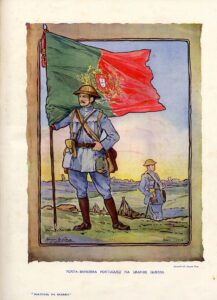By CAROLYN EVAN-WATKINS features@algarveresident.com
Carolyn Evan-Watkins is a sports, fitness and Pilates instructor with more than 15 years experience. She is a lecturer, teaching and assessing instructors in health and fitness. Carolyn has also been a Government advisor, and still writes and presents her own courses within this field. She moved to the Algarve last year and teaches Pilates classes in Vale do Lobo and Boliqueime.
Warming up will prepare your body and your mind for the activity/exercise that is to come. It will gradually raise your CV (cardiovascular) system, which will increase the blood flow to the working muscles. This will then decrease muscle soreness and there will be less risk of injury.
Warming up and cooling down properly are as important as the exercises themselves, but many people forget this.
It is important to choose a warm up that will suit the activity that you are about to do. The warm up should use the same muscles that you will be using for your workout. For example, if you are going jogging or power walking, then it is advisable to do a slow walk for several minutes to warm up.
The warm up should last for a period of 10 to 15 minutes. This will depend on a number of factors, for example your fitness level – the fitter, more active you are, the less time you will need to warm up. It will also depend on the temperature of your surroundings and on how hard you will be working.
During your warm up, you should be aiming to mobilise all your major joints (from your shoulders down to your ankles) and muscles, raise your heart rate and stretch all major muscles.
I have heard many people say that because they are young, or fit or used to a certain type of activity, they do not need to warm up. This is incorrect; EVERYONE should warm up before they take part in any form of exercise.
Some benefits of warming up properly are:
Increase in muscle temperature which will help to prevent muscle injury and soreness.
Increased heart rate, which will allow the oxygen in your blood to travel to the working muscles faster.
Increase in ‘synovial fluid’ – this is the fluid within certain joints which reduces friction and allows free movement e.g. the shoulder and hip joints.
Increase in the suppleness of the muscle fibres within your muscles, allowing greater flexibility.
Warm up activities should consist of mobilisation movements to warm up and mobilise your joints. From the shoulders move to the elbows, wrists, hips, knees, ankles and finally the spine (the spine should be last to be warmed up and needs to have special care taken).
For example, if we start with the shoulders, these movements can consist of arm raises and shoulder rolls. Making sure that the movements are slow and fluid, enabling the joint to work through a full range of movement.
After mobilisation, the aerobic section of the warm up should be undertaken, this consists of exercises or movements to increase your heart rate and raise the temperature of the working muscles.
Finally, stretches should be performed. I am very well aware that there is contradictory research when it comes to warm up stretches, but as long as they are performed properly, and your heart rate does not decrease significantly so that your body cools down again, stretches are for me an integral part of any warm up.
As usual whatever you do, make sure it is safe, effective and fun.
For more information please contact Carolyn on 931 106 716 or www.pilatesportugal.eu
























